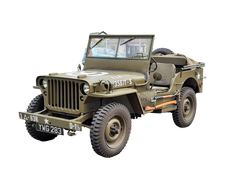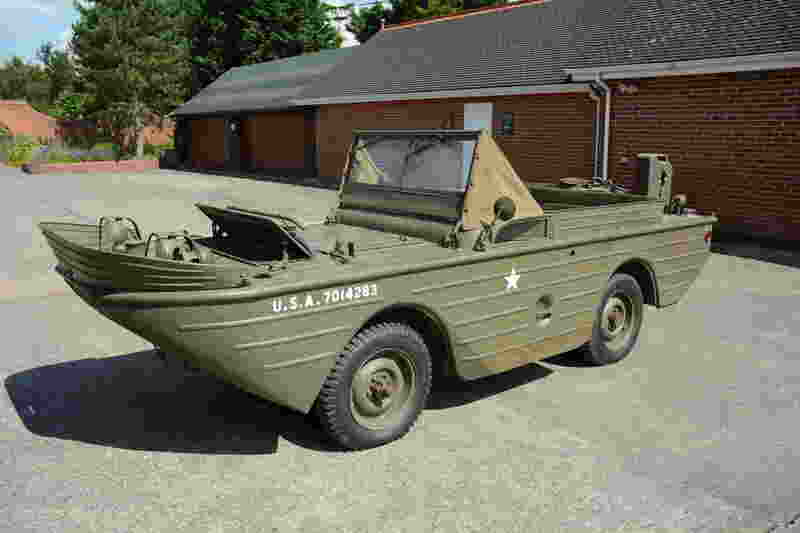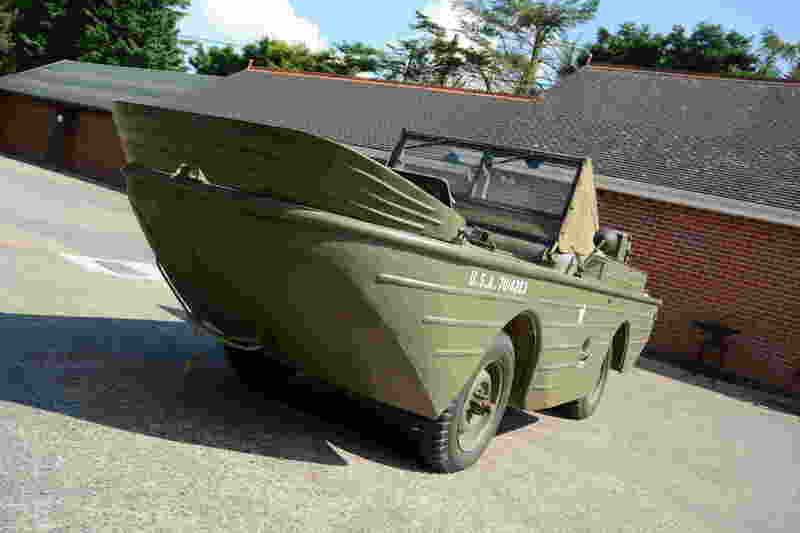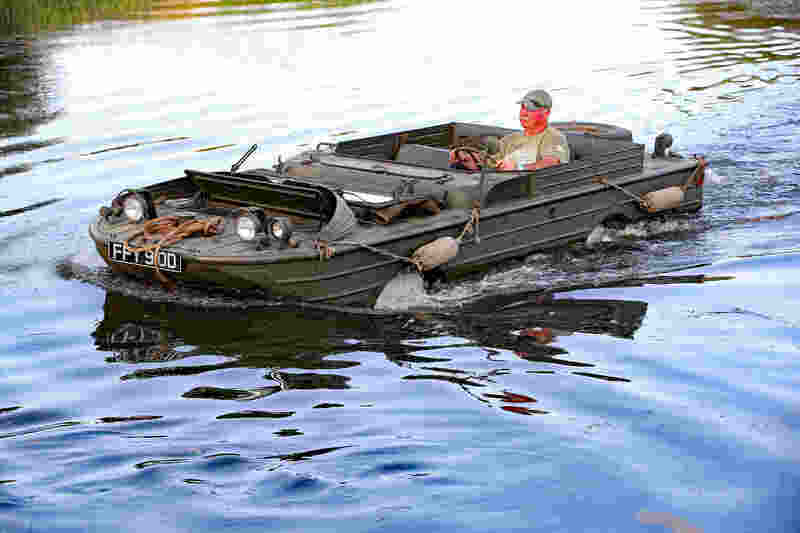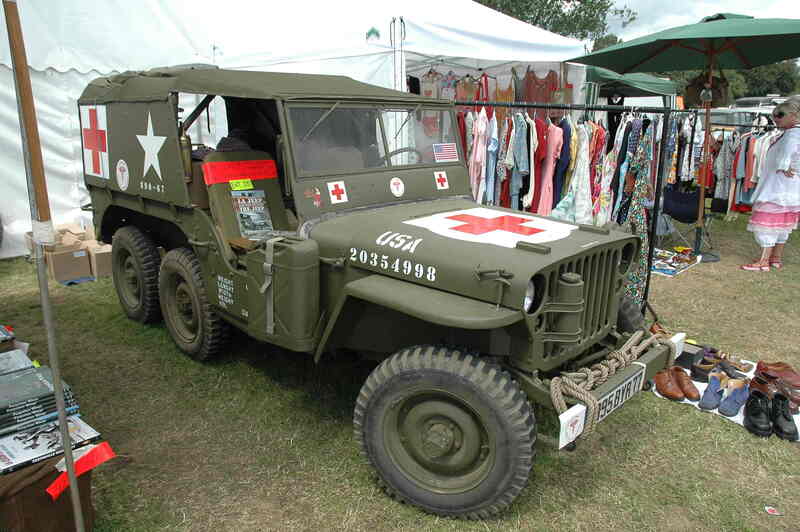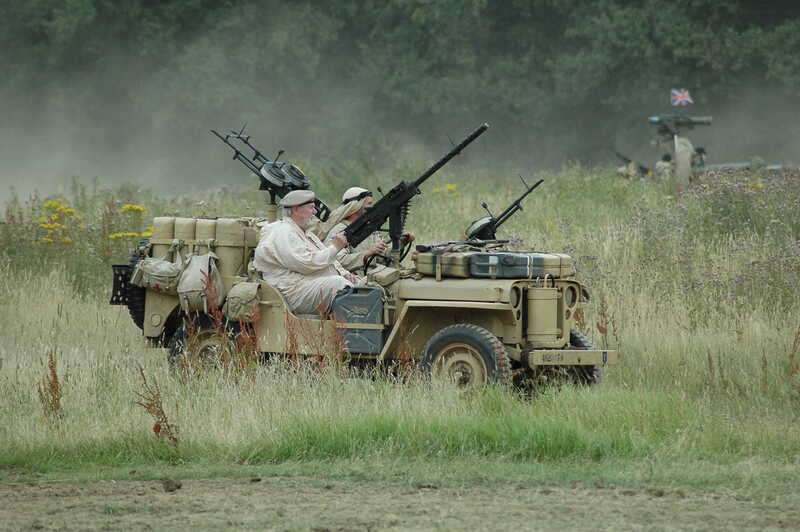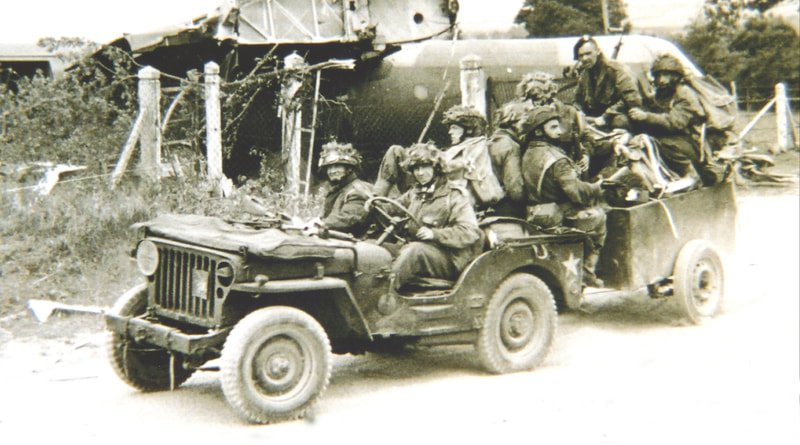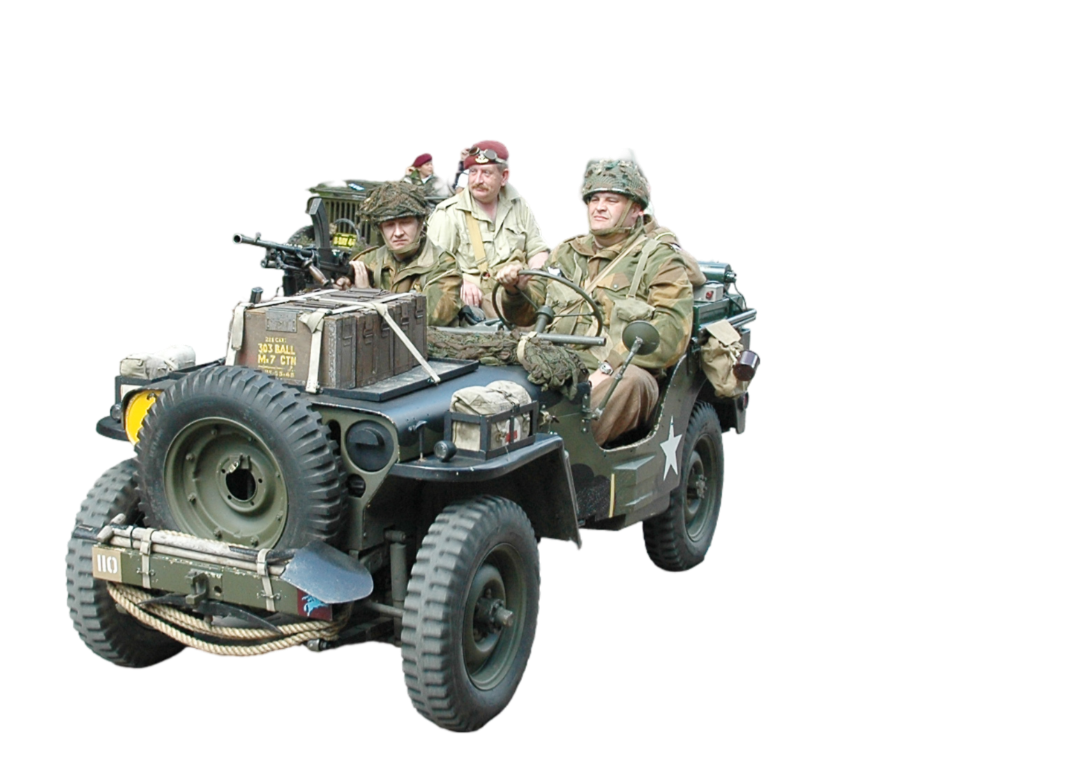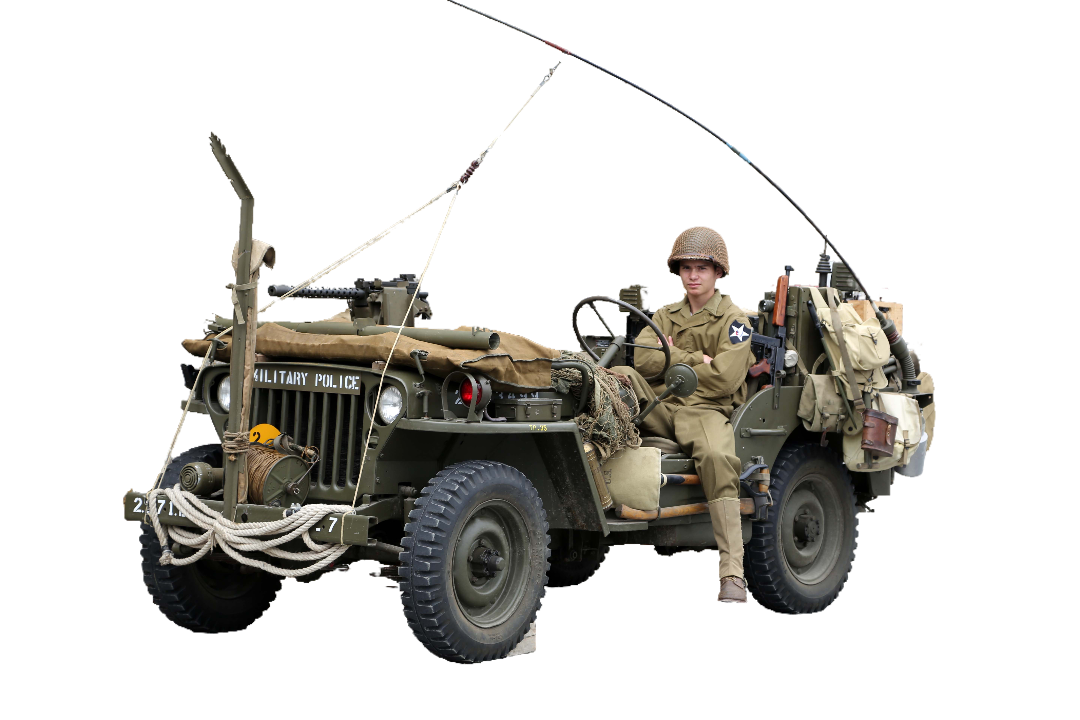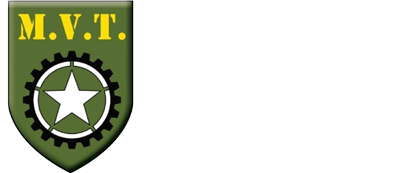The History of the Jeep
Design, Development, Production, Modification and Combat History
|
From its invention "by committee" to its mass production and deployment, the story of the jeep's 80 year history is a fascinating one.
Its role in helping defeat the Axis powers during WWII is well documented and their versatilty and durability led them to be used military organisations until the 1970s and by civilians, enthusiasts and reenactors ever since. |
Design and Development
In the early 1930s, the US Army became interested in the British Army's use of the Austin 7 as a reconaissance vehicle. In June 1940, and as they prepared for involvement in WWII, they realised the need for such a vehicle and wanted a four wheel drive, low-profile, powerful but lightweight, cross-country tactical vehicle, capable of carrying personnel and equipment across rough terrain.
Working with a Pennsylvanian based motor manufacturer called Bantam, they compiled a set of specifications "a rectangular shaped", part-time 4-wheel drive vehicle, with a 2-speed transfer case, three bucket seats, a fold-down windshield, and blackout and driving lights, of just 1,200 lb (540 kg), with a payload up to 600 lb (270 kg), on a wheelbase no longer than 75 in (1.91 m) a maximum (collapsible) height of 36 in (91 cm) and an engine and drive train capable of smoothly pulling at speeds ranging from 3–50 miles per hour (4.8–80.5 km/h)". They solicited bids from 135 manufacturers, requesting responses within 11 days and indicated that following the award of the contract, they would expect fully functioning prototypes to be delivered within 49 days and 70 test vehicles with 75 days.
Working with a Pennsylvanian based motor manufacturer called Bantam, they compiled a set of specifications "a rectangular shaped", part-time 4-wheel drive vehicle, with a 2-speed transfer case, three bucket seats, a fold-down windshield, and blackout and driving lights, of just 1,200 lb (540 kg), with a payload up to 600 lb (270 kg), on a wheelbase no longer than 75 in (1.91 m) a maximum (collapsible) height of 36 in (91 cm) and an engine and drive train capable of smoothly pulling at speeds ranging from 3–50 miles per hour (4.8–80.5 km/h)". They solicited bids from 135 manufacturers, requesting responses within 11 days and indicated that following the award of the contract, they would expect fully functioning prototypes to be delivered within 49 days and 70 test vehicles with 75 days.
Only two companies responded — Bantam, (who had an obvious advantage, having influenced the specifications) and Willys Overland Motors, a small manufacturer of vehicles. Ford Motor Company were then re=approached directly and jmade a bid. Willys was the lowest bidder but financial penalties issued because they failed to produce a proper set of technical drawings and required longer to produce a prototype, made Bantam cheaper and they awarded the contact to Bantam, the only company committing to deliver a pilot model in 49 days and 70 more pre-production units in 75 days. Bantam's chief engineer and plant manager, Harold Crist asked freelance Detroit designer Karl Probst to collaborate with him and began work on 17 July 1940. Probst produced the initial design for the Bantam Reconnaissance Car, or BRC Pilot, in just two days, and worked up a cost estimate the next day. Bantam's bid was submitted, complete with blueprints, on the 22 July deadline and their prototype, named the "Blitz Buggy" was delivered at 4.30 pm on 23 September 1940, just half an hour within the deadline.
As the prospect of war became more imminent, officials realised that Bantam lacked the capacity to deliver on the qualntities required - then 1500 and Willys and Ford were approached and asked for prototypes to go forward to the testing phase.
To expedite the design phase and support the war effort, Bantam agreed to share their blueprints with their competitors. Willys-Overland delivered the prototype "Quad" (named for the 4x4 system it featured), in a remarkable 75 days. Meanwhile Ford produced their flat grilled "Pygmy" prototype.
Vigorous testing followed; The Willys Quad immediately stood out because of its strong engine while Ford's front sheetmetal design with a piano hinge bonnet which allowed easy access to the engine, stood out. 3 pre-production models evolved — American Bantam Mk II, Ford GP and Willys MA and because the Army were in such haste all three were deemed acceptable and initially 1500 were ordered from each company, with an increased weight limit. Subsequent revisions saw all three manufacturers release new models and with the leand lease scheme being expanded to support the allies, production levels were raised.
On 22 January 1941, the Quartermaster Corps Technical Committee advised standardisation of the jeeps across all 3 manufacturers. The Bantam BRC 40 the lightest and most nimble version with good suspension, brakes and high fuel economy began production on 31 March 1941, with a total of 2,605 built up to 6 December. Ford's was named the "GP", with "G" indicating a "Government" contract, and "P" chosen by Ford to designate a car with a 203cm wheelbase. It was the most numerous at 4,4583 but was underpowered and unreliable. They also built 50 with four wheel steering, of which only 4 survive. Willys began production latest of all on June 5th with their renamed MA for Military model A. Only 1,555 were built, most of which went to the Soviet Union under Lend-Lease. Only 27 units are still known to exist.
Mass Production
|
Eventually, the military chose Willys with its superior Go Devil engine, with standardising production and they integrated whatever the best features of Bantam and Ford into their design and hence the MB model was the one chosen in July 1941, to go into mass production. Initially tasked with the sole production of 16,000, but by October, Willys could not keep up with supply and Ford received government contracts to build 30,000 units, using Willys' blueprints, drawings, specifications, and patents, including the more powerful Willys engine. It was named GPW with the W representing Willys to reflect this. Ford retooled at a cost of $4 million - $55 in today’s money to build Willys engines and produced the first GPW as quickly as 2 January 1942. Just days before, in late December 1941, the Quartermaster Corps had ordered another 63,146 GPWs.
Ford later replaced the welded grate front grille by a single pressed sheet steel part, with nine vertical open slots to ventilate the radiator, and circular openings in front of the lights, to simplify production, and save costs. Willys adopted this in their production of the MB after unit 25,808. Ther remained many minor differences; the Ford chassis had an inverted U-shaped front cross member instead of a tubular bar, and a Ford script letter "F" was stamped onto many small parts. With so many parts being interchangeable occasionally a jeep was produced with parts from both manufacturers – rarities that are highly collectable today. |
Production FiguresTotal Jeeps Produced for WWII by Bantam 2,675 Total Jeeps Produced for WWII by Willys 362,841 Total Jeeps Produced for WWII by Ford 281,448 Total Jeeps Produced for WWII = 647,870 |
After the war, French Car builder, Hotchkiss built their version of the Willys MB/FordGPW called the M201, under license. It was used by the French Army for the next 50 years with the last M201 being taken out of service as late as the year 2000. In France it is usually simply called “La Jeep”.
Jeep Specification
Mass 2,453 lb (1,113 kg) curb weight (with engine fluids and full fuel) 2,337 lb (1,060 kg) dry weight
Length 132 in (3.35 m)
Width 62 in (1.57 m)
Height overall, top up: 69.75 in (1.77 m) top down 52 in (1.32 m)
Engine 134 cu in (2.2 L) Inline 4 Willys L134 "Go Devil" 60 hp (45 kW; 61 PS) gross/ 54 hp (40 kW; 55 PS) net
Power/weight 49 hp/ST (54.0 hp/t)
Payload capacity 1,200 lb (540 kg) on-road; 800 lb (360 kg) cross-country
Maximum speed 65 mph (105 km/h)
Transmission 3 speed x 2 range transfer case
Suspension Live axles on leaf springs front and rear
Ground clearance 8.75 in (22 cm)
Fuel capacity 15 US gal (12 imp gal; 57 L)
Operational range 300 miles (480 km)
Crew 3 to 4
Length 132 in (3.35 m)
Width 62 in (1.57 m)
Height overall, top up: 69.75 in (1.77 m) top down 52 in (1.32 m)
Engine 134 cu in (2.2 L) Inline 4 Willys L134 "Go Devil" 60 hp (45 kW; 61 PS) gross/ 54 hp (40 kW; 55 PS) net
Power/weight 49 hp/ST (54.0 hp/t)
Payload capacity 1,200 lb (540 kg) on-road; 800 lb (360 kg) cross-country
Maximum speed 65 mph (105 km/h)
Transmission 3 speed x 2 range transfer case
Suspension Live axles on leaf springs front and rear
Ground clearance 8.75 in (22 cm)
Fuel capacity 15 US gal (12 imp gal; 57 L)
Operational range 300 miles (480 km)
Crew 3 to 4
Modifications
As we have seen, the standard jeep proved to be the most versatile of vehicles but further modifications enabled them to serve an even wider set of purposes.
Ford GPA was designed as a smaller version of the DUKW. About 12,700 were built but it was not a great success.
A 6 wheel version Willys MBT or TUG was built and used as mainly a platform for artillery.
One modification was even more extreme - The Hafner Rotabuggy (formally known as the Malcolm Rotaplane and as the "M.L. 10/42 Flying Jeep") was a British experimental aircraft that was essentially a Willys MB combined with a rotor kite, developed with the intention of producing a way of air-dropping off-road vehicles. However, the introduction of gliders that could carry vehicles made the Rotabuggy superfluous and further development was cancelled
Combat Service History
The durabilty and versatility of the Jeep, led it to being used in every theatre of war during WW2 by every branch of the armed services in every allied army. The United States provided jeeps to almost all of its allies: Britain, Canada, Australia, India, the Free French, USSR, and China all received jeeps, mostly under the American Lend-Lease program.
The Jeep fulfilled many roles: reconnaissance vehicle, command and staff car, supply (hauling trailers full of vital supplies across the battlefield), carrying aircrew to their aircraft, carrying stretchers bearing wounded troops, pulling light artillery pieces into battle, by the Special Air Service units to conduct raids behind enemy lines, loaded onto gliders to be dropped behind enemy lines and many many more.
The Jeep fulfilled many roles: reconnaissance vehicle, command and staff car, supply (hauling trailers full of vital supplies across the battlefield), carrying aircrew to their aircraft, carrying stretchers bearing wounded troops, pulling light artillery pieces into battle, by the Special Air Service units to conduct raids behind enemy lines, loaded onto gliders to be dropped behind enemy lines and many many more.
The jeep continued to serve the military long after WW2 all over the world; the Korean War and many more post 1945 conflicts.
General George Marshall (later Chief of Staff under presidentsFranklin D. Roosevelt and Harry S. Truman, and Secretary of State and Secretary of Defence under Truman) called it “America's greatest contribution to modern warfare”.

